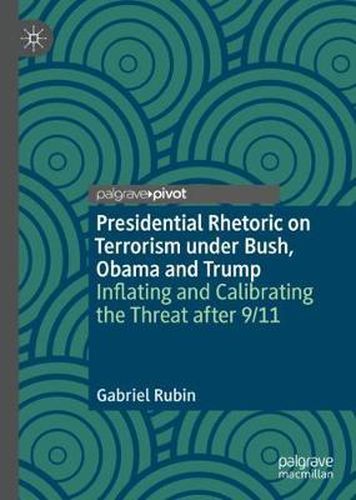Readings Newsletter
Become a Readings Member to make your shopping experience even easier.
Sign in or sign up for free!
You’re not far away from qualifying for FREE standard shipping within Australia
You’ve qualified for FREE standard shipping within Australia
The cart is loading…






Through the analysis of eighteen years of presidential data, this book shows how Presidents Bush, Obama, and Trump have conducted and framed the war on terror since its inception in 2001. Examining all presidential speeches about terrorism from George W. Bush’s two terms as President, Barack Obama’s two terms as President, and Donald Trump’s first year as President, this book is the first to compare the three post-9/11 presidents in how they have dealt with the terror threat. Presidential Rhetoric on Terrorism under Bush, Obama, and Trump argues that when policies need to be sold to the public and Congress, presidents make their pertinent issues seem urgent through frequent speech-making and threat inflation. It further illustrates how after policies are sold, a new President’s reticence may signify quiet acceptance of the old regime’s approach. After examining the conduct of the war on terror to date, it concludes by posing policy suggestions for the future.
$9.00 standard shipping within Australia
FREE standard shipping within Australia for orders over $100.00
Express & International shipping calculated at checkout
Through the analysis of eighteen years of presidential data, this book shows how Presidents Bush, Obama, and Trump have conducted and framed the war on terror since its inception in 2001. Examining all presidential speeches about terrorism from George W. Bush’s two terms as President, Barack Obama’s two terms as President, and Donald Trump’s first year as President, this book is the first to compare the three post-9/11 presidents in how they have dealt with the terror threat. Presidential Rhetoric on Terrorism under Bush, Obama, and Trump argues that when policies need to be sold to the public and Congress, presidents make their pertinent issues seem urgent through frequent speech-making and threat inflation. It further illustrates how after policies are sold, a new President’s reticence may signify quiet acceptance of the old regime’s approach. After examining the conduct of the war on terror to date, it concludes by posing policy suggestions for the future.